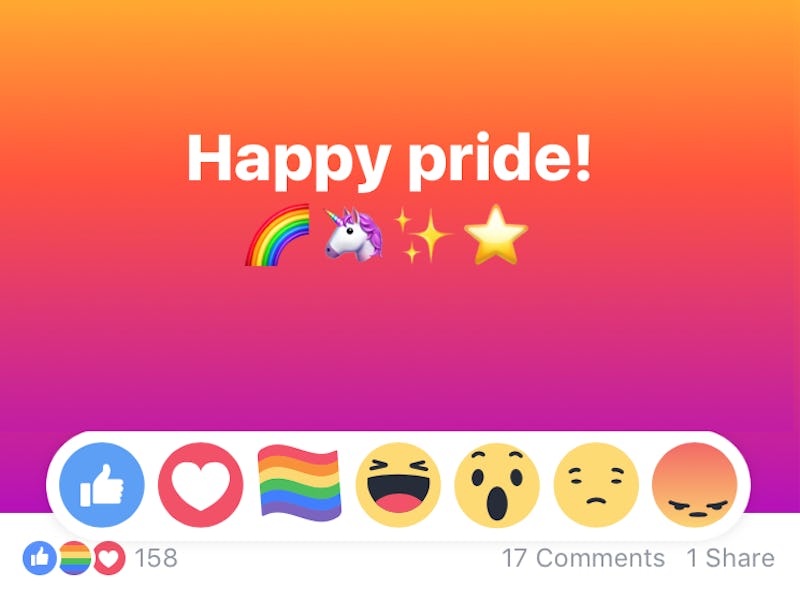Why Is it so Hard to Get the Freaking Facebook Pride Reaction?
The social network's celebration of Pride felt more closeted than proud.

June is Pride Month in many countries and to celebrate, Facebook is adding a rainbow flag reaction to its array of emoji responses and the regular “like.” Except for some of the social media platform’s 2 billion global users, the rainbow flag is not available.
Is Facebook making an appeal to the cultural sensitivities of anti-gay users? Not exactly. It’s more likely that while the social media platform believes “in building a platform that supports all communities,” it is not trying to offend users in countries with customs and laws incongruent with LGBTQ rights and culture.
Facebook announced the launch of the rainbow flag reaction along with Pride-themed profile-picture frames and camera filters earlier this month in a public statement. Access to the reaction, in particular, has caused a stir, since it is opt-in for many users. “This is a new experience we’ve been testing,” goes the same public statement. And the rainbow flag reaction is only a default option in “major markets with Pride celebrations.”
Given such disparity in access, many Facebook users are irate considering that with the social media platform’s collective data of likes, interests, and posts, it could presumably differentiate between someone who is LGBTQ or is an ally of those who are, from users who do not support LGBTQ rights.
See also: How to Get the Facebook Pride Reaction in 3 Steps
For its part, Facebook has made the rainbow flag reaction available to whoever likes its official LGBTQ page. But, clunky as this rollout is, liking the page doesn’t necessarily guarantee access to the Pride reaction. Worse yet, liking the page could be considered an outing exercise — especially troubling for users living in areas that are less gay-friendly. The rainbow flag reaction may not be an option at all in countries where homosexuality is illegal.
Facebook’s trial-and-error approach can play as confusing if not awkward, as it deploys both ubiquitous access to temporary reaction buttons and opt-in experiences. Recently, to celebrate Mother’s Day (purple “thankful” flowers) and Halloween (candy heart, witch, ghost, Frankenstein, jack-o’-lantern), users could react without liking a specific page or noting any special interest in the holidays. One day you logged in and, unprompted, those reactions were part of your Facebook experience. Why can’t the same be said of Pride month, or the 50th anniversary of Star Trek, which also required an opt-in “like”?
Facebook’s appeal to inclusivity was sidelined by what appears to be an attempt to not offend the varied mores of its global community. What was intended as a proud celebration of difference, instead scans as a closeted flag-waving of Pride.